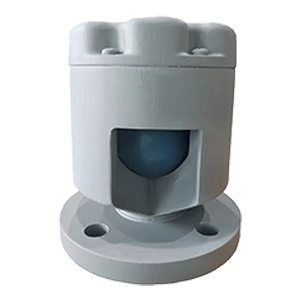Whether you’re managing a marine fuel tank, a diesel generator, or an automobile fuel system, proper fuel tank venting is more than a design requirement — it’s a critical safety feature that ensures consistent performance and prevents dangerous malfunctions.
Every time fuel is added or consumed, the volume of air inside the tank changes. Without an appropriate venting mechanism to allow air in and vapor out, the system becomes pressurized or vacuum-sealed — both of which can lead to engine failure, structural tank damage, fuel overflow, or even explosions.
1. Vacuum Lock and Fuel Starvation
As fuel is drawn from the tank to the engine, air must replace the lost volume to equalize internal pressure. If no vent is present, a vacuum forms inside the tank. This creates resistance against the fuel flow, causing:
-
①Engine hesitation
-
②Stalling under load
-
③Difficulty starting
-
④In severe cases, complete fuel delivery failure
This is known as vacuum lock, a condition where negative pressure in the tank restricts fuel from reaching the engine — even though the tank might still contain fuel.
2. Pressure Buildup and Structural Damage
In hot environments or during rapid fuel dispensing, fuel vapor expands. Without a vent to relieve this pressure, internal forces begin to act against the tank walls. Over time, this can cause:
-
①Tank bulging or deformation (especially in plastic tanks)
-
②Seam failure or cracking in metal tanks
-
③Increased risk of fuel leakage or rupture
A sealed fuel tank becomes a pressurized container — and if that pressure exceeds the structural limits, it can explode or split, especially under sunlight or near heat sources.
3. Overflow and Spillage During Refueling
Fuel tanks that are not properly vented create airlocks during refueling. As fuel enters, trapped air has nowhere to escape. This leads to:
-
①Fuel splashback
-
②Overflow at the fill neck
-
③Incomplete refueling or slow fill-ups
For marine applications, this can be particularly dangerous due to the risk of fuel contamination in water or deck fires.
4. Poor Engine Performance
When fuel flow becomes inconsistent due to venting issues, engine performance degrades noticeably. Some common symptoms include:
-
①Uneven idling
-
②Power loss during acceleration
-
③Intermittent stalling
-
④Misfiring
These issues are often mistakenly diagnosed as fuel pump or injector failures, leading to costly and unnecessary repairs — when the real issue is simply a blocked or missing fuel tank vent.
5. Fuel Vapor Buildup and Environmental Hazards
Modern emission standards require controlled fuel vapor release, typically through vent valves with charcoal canisters (in automotive applications) or vented caps with flame arrestors (in marine tanks). An unvented system:
-
①Increases fuel vapor concentration inside the tank
-
②Raises the risk of combustion
-
③May violate environmental compliance standards
This is especially critical in industrial applications and areas with strict VOC (volatile organic compound) emissions regulations.
Real-World Consequences of Poor Venting
-
①Boats stalling mid-sea due to vacuum lock
-
②Fuel tank collapses in underground storage systems
-
③Diesel generator failures during peak demand
-
④Insurance claims denied due to non-compliant venting systems
Vent-related failures are often overlooked until significant damage occurs.
Best Practices: How to Ensure Proper Fuel Tank Venting
-
①Install a dedicated vent valve or breather cap designed for your fuel type and tank size
-
②Inspect and clean vents regularly, especially if operating in dusty, marine, or high-vibration environments
-
③Use flame arrestors or rollover valves for safety in mobile or marine systems
-
④Ensure all systems comply with local safety and emission regulations (e.g., EPA, ISO, CE, USCG)
Post time: Jul-29-2025

